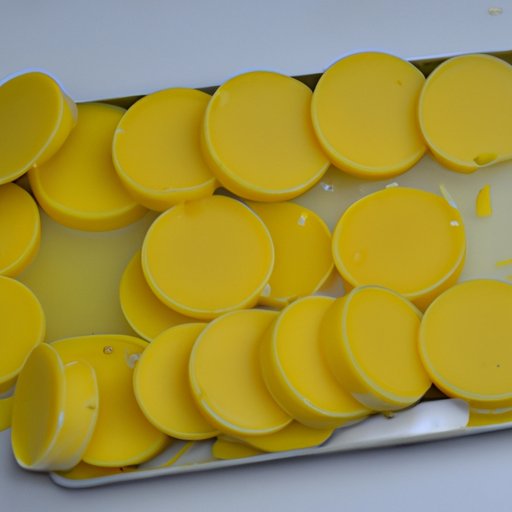
Introduction
Wax is a versatile product used in various applications, from sealing envelopes to making candles. While there are numerous commercial wax products available, making your wax at home can be fulfilling and cost-effective. In this comprehensive guide, we take you through a step-by-step guide on how to make wax, its history, benefits of homemade wax, science behind wax making, and tips and tricks on making the perfect wax at home.
Step-by-Step Guide on How to Make Wax
Before you start making wax, you need to assemble the necessary equipment and ingredients. Some of the equipment that you may require include:
- Double boiler or a saucepan and a heatproof bowl
- Thermometer
- Stirring spoon
- Scale or measuring-cups
- Containers – jars or tins, depending on the amount of wax you plan to make
The ingredients that you will require depend on the type of wax. For instance, if you’re making candle wax, you’ll require:
- Beeswax
- Soy wax or paraffin wax
- Essential oils or fragrance oils
On the other hand, if you’re making body wax, you’ll need:
- Sugar
- Lemon juice
- Water
- Essential oils
Here’s a simple and comprehensive guide on how to make wax:
- Measure the required quantity of beeswax and paraffin or soy wax and melt them in a double boiler or heatproof bowl over a saucepan of water. Use a thermometer to check the temperature.
- Once the wax melts, remove it from the heat and add your preferred essential oil or fragrance oil. Stir thoroughly.
- Pour the mixture into a jar or tin while still warm and allow it to cool down.
- Cut a wick string to size and place it in the center of the jar. If the mixture hardens before you get the chance to place the wick, reheat the wax briefly, insert the wick, and let it cool again.
It’s essential to note the type of wax used determines the temperature required for melting, the duration it takes to cool, and any other additives required. Using a thermometer allows you to control the temperature, resulting in the perfect wax consistency.
The History of Making Wax
The history of wax making dates back to ancient times when people used beeswax for sealing letters and documents. Egyptians developed the dip-method technique of making candles by dipping papyrus reeds into molten tallow or beeswax. In the Middle ages, beeswax candles were widespread in monasteries and churches because they burned cleanly and without any smoke. Today, wax making has evolved to include different types of wax, including paraffin wax, soy wax, and palm wax.
Benefits of Homemade Wax
Making your wax at home has numerous benefits, including:
- Cost-effective – making your wax is more affordable than buying commercial products, especially if you’re making large quantities.
- Customizable – You can experiment to find your preferred recipe, scent, and colour.
- Consistent quality – When you make your wax, you have control over the process, leading to quality consistency.
- Environmentally friendly – most commercial wax products contain chemicals that are harmful to the environment. By making your wax, you can opt for natural ingredients that are eco-friendly.
The Science behind Wax Making
The process of making wax involves heating the solid wax to a liquid state to incorporate additives. As the liquid wax cools down, it hardens, resulting in a solid form. The chemical composition of wax varies, depending on the type, but most contain long-chain hydrocarbons, esters, and fatty acids. The additives used, such as essential oils, affect the chemical composition, resulting in different scents and colours.
Tips and Tricks on How to Make Wax
Making wax can be a challenging process, and here are some commonly known mistakes that you should be aware of:
- Overheating the wax can cause it to burn and emit a smoky odour.
- Using the wrong type of wax leads to inconsistent quality and poor texture.
- Not using a thermometer – It’s essential to use a thermometer to control the temperature and achieve the right consistency for different types of wax.
- Not stirring the wax mixture thoroughly results in uneven dispersion of additives.
- Adding too much or too little of additives can affect the overall quality of the wax.
To make perfect wax at home, ensure you:
- Use the recommended type of wax for the intended purpose
- Control the temperature using a thermometer
- Stir the mixture consistently
- Add the right quantities of additives
Conclusion
Homemade wax is an excellent alternative to commercial wax products. In this guide, we’ve provided a step-by-step process on how to make wax, its history, benefits, science, and tips and tricks to make perfect wax. Making wax at home is cost-effective, customizable, and environmentally friendly. We encourage you to try making your wax at home, experiment with different additives, and find your perfect recipe.




